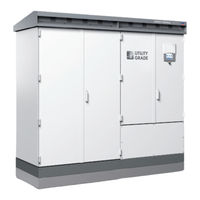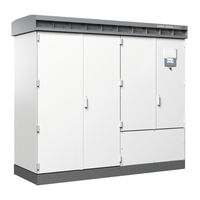SMA SUNNY CENTRAL 900CP XT Manuals
Manuals and User Guides for SMA SUNNY CENTRAL 900CP XT. We have 4 SMA SUNNY CENTRAL 900CP XT manuals available for free PDF download: User Manual, Installation Manual, Maintenance Manual
Advertisement
Advertisement
SMA SUNNY CENTRAL 900CP XT Installation Manual (30 pages)
Retrofitting of the Option "Noise Reduction"



